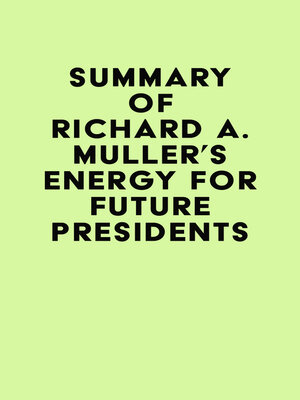
Sign up to save your library
With an OverDrive account, you can save your favorite libraries for at-a-glance information about availability. Find out more about OverDrive accounts.
Find this title in Libby, the library reading app by OverDrive.



Search for a digital library with this title
Title found at these libraries:
| Loading... |
Please note: This is a companion version & not the original book. Book Preview:
#1 The 2011 earthquake in Japan struck the Fukushima Dai-ichi nuclear power plant, which was designed to withstand a large earthquake, but not a 50-foot tsunami. The reactor was severely damaged, and many feared that the uranium inside would explode like an atomic bomb.
#2 A nuclear bomb is made when a nuclear reactor blows up. In a nuclear reactor, the uranium is typically only 4 percent U-235, with the rest consisting of heavy uranium, U-238. The chain reaction never gets going unless a trick is employed.
#3 At Fukushima, the most modern reactors did not need auxiliary cooling systems, but the most damaged reactors did. The most modern reactors do not depend on auxiliary power systems to keep them cool, but the most damaged reactors did.
#4 Following the Fukushima nuclear accident, radioactive iodine and cesium were released. These two elements are the most dangerous because they decay quickly, releasing radiation as they go.






